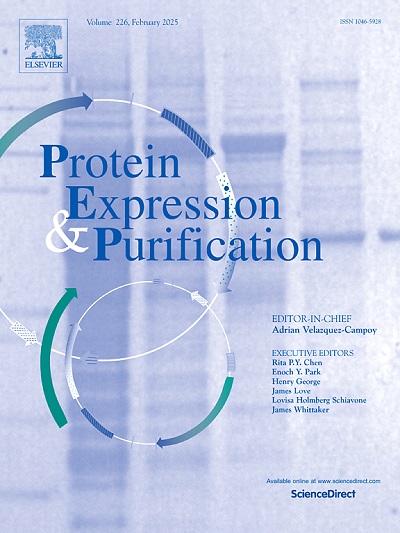利用Sf9细胞基于Spike蛋白制造冠状病毒样颗粒的可扩展方法。
IF 1.2
4区 生物学
Q4 BIOCHEMICAL RESEARCH METHODS
引用次数: 0
摘要
新冠肺炎大流行引发了寻找疫苗等预防方法的竞赛。病毒样颗粒(VLP)由于其安全性和较强的免疫原性,是一种很有前途的疫苗平台。利用Sf9等昆虫细胞的杆状病毒表达系统为VLP的生产提供了一种有效的方法。本研究在搅拌式生物反应器中研究了携带SARS-CoV-2刺突、膜、核衣壳和包膜蛋白基因的重组杆状病毒对Sf9细胞的共感染。分析刺突蛋白表达、VLP形成和细胞代谢谱。生物反应器试验显示了VLP生产的合适条件,证明了该平台处理新出现的病毒变体的稳健性。这些发现支持大规模生产携带刺突蛋白作为主要免疫原的VLP,作为开发针对SARS-CoV-2和其他冠状病毒以及未来病毒威胁的疫苗的通用平台,从而能够在几乎没有变化的情况下快速应对新出现的疫情。本文章由计算机程序翻译,如有差异,请以英文原文为准。
Scalable approach for coronavirus-like particles making based on the spike protein using Sf9 cells
The COVID-19 pandemic has led to a race to find prevention methods, such as vaccines. Virus-like particles (VLP), mimicking native viruses without genetic material, represent a promising vaccine platform due to their safety and strong immunogenicity. The baculovirus expression system, using insect cells like Sf9, offers an efficient method for VLP production. This study investigated the coinfection of Sf9 cells with recombinant baculoviruses carrying genes for SARS-CoV-2 spike, membrane, nucleocapsid, and envelope proteins in stirred tank bioreactors. Spike protein expression, VLP formation, and cellular metabolic profiles were analyzed. Bioreactor assays revealed suitable conditions for VLP production, demonstrating the robustness of this platform to handle emerging viral variants. These findings support the large-scale production of VLP carrying spike protein as the main immunogen as a versatile platform for vaccine development against SARS-CoV-2 and other coronaviruses and future viral threats, enabling a rapid response to emerging outbreaks with few changes.
求助全文
通过发布文献求助,成功后即可免费获取论文全文。
去求助
来源期刊

Protein expression and purification
生物-生化研究方法
CiteScore
3.70
自引率
6.20%
发文量
120
审稿时长
32 days
期刊介绍:
Protein Expression and Purification is an international journal providing a forum for the dissemination of new information on protein expression, extraction, purification, characterization, and/or applications using conventional biochemical and/or modern molecular biological approaches and methods, which are of broad interest to the field. The journal does not typically publish repetitive examples of protein expression and purification involving standard, well-established, methods. However, exceptions might include studies on important and/or difficult to express and/or purify proteins and/or studies that include extensive protein characterization, which provide new, previously unpublished information.
 求助内容:
求助内容: 应助结果提醒方式:
应助结果提醒方式:


